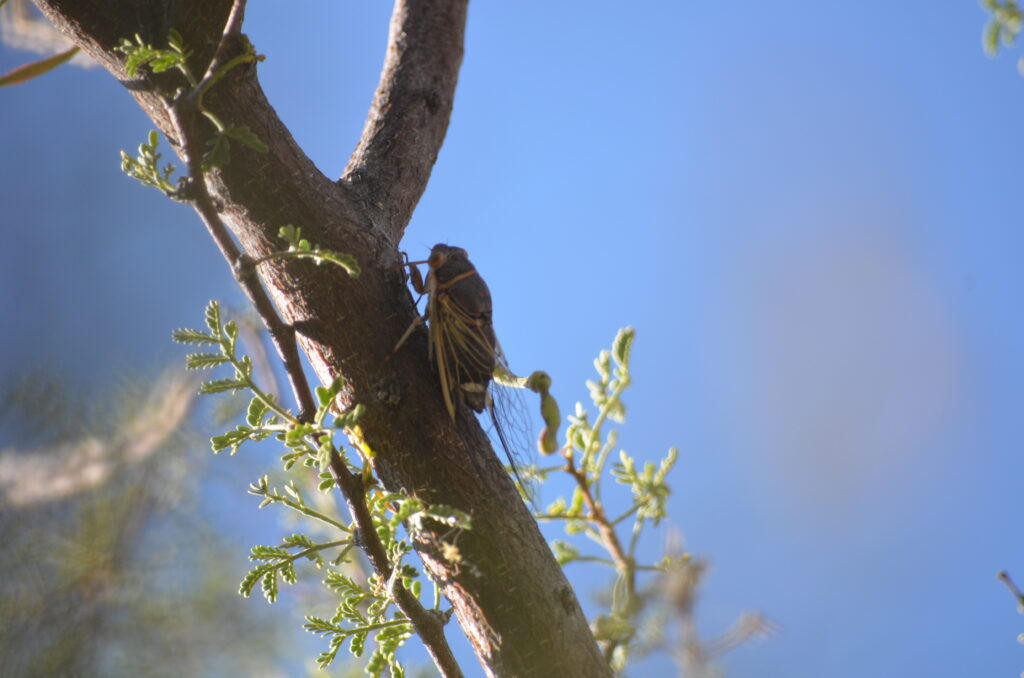As we progress through the summer months in Tucson and throughout southern Arizona, residents are greeted by the familiar and distinctive low buzzing sound of the annual cicada. This iconic insect is particularly prominent leading up to and during the summer monsoons. Unlike their relatives in other parts of the U.S., which may have life cycles spanning over a decade and have received a lot of media attention this year, the annual cicadas in southern Arizona have a much shorter, yearly life cycle.

The Life Cycle of the Annual Cicada
Annual cicadas, as their name suggests, emerge every year. Their life cycle is markedly different from the periodical cicadas found in other regions, which can stay underground for 13 or even 17 years. The annual cicada’s life cycle begins in late summer when the female cicadas lay their eggs in tree branches or twigs. After several weeks, the eggs hatch into nymphs and drop to the ground and burrow into the soil, where they remain for about a year, feeding on plant roots. Finally, in late spring to early summer, the nymphs emerge from the ground, shed their exoskeletons, and transform into adults. The adult cicadas then climb trees or shrubs, where males produce their characteristic buzzing sound to attract females.
Why Do Cicadas Buzz?
The buzzing sound you hear leading up to and during the summer monsoons is produced by male cicadas as part of their mating call. They have specialized structures called tymbals located on their abdomens. By rapidly contracting and relaxing muscles attached to these tymbals, they create the loud, resonant buzzing sound. This noise serves to attract females and establish territory among other males.
The Ecological Role of Cicadas
Despite their sometimes annoying presence, cicadas play an important role in the ecosystem. They aerate the soil through their burrowing activities and provide a significant food source for birds, mammals, and other predators. Their life cycle also contributes to the nutrient cycle, enriching the soil when they die.
Tips for Managing Cicadas
While cicadas are not harmful to humans, their loud buzzing can be a nuisance; their presence in large numbers can cause some damage to young trees and shrubs.
- Protect Young Trees: Use fine netting or cheesecloth to cover young or vulnerable trees and shrubs. This prevents cicadas from laying eggs in the branches.
- Prune Trees: Regularly prune tree branches to remove dead or weak limbs, reducing the number of places where cicadas can lay eggs.
- Water Plants Properly: Ensure your plants are well-watered and healthy, making them less susceptible to damage from cicada egg-laying activities.
- Limit Nighttime Lights: Cicadas are attracted to lights at night. Reducing outdoor lighting during peak cicada season can help minimize their presence around your home.
- Professional Soil Treatments: Treating the soil can reduce the number emerging cicada nymphs, helping to lower the overall cicada population around your home.
The annual cicada is a unique and fascinating part of the summer landscape in southern Arizona. While their buzzing can be a bit overwhelming, there are effective DIY and professional solutions to manage their impact around your home.
For more information or to schedule a consultation, please contact Bill’s Home Service at (520) 277-2719 or visit our website at www.BillsHomeService.com. We’ve been putting pests to rest for 60 years and are here to help you enjoy a pest-free summer!
